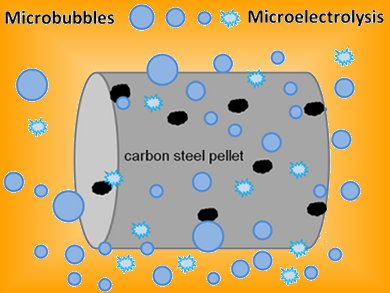Phenol is one of the most serious organic pollutants and a common constituent in effluents from a variety of industries, such as polymeric resin production, oil refining, and coking plants. Over the last decade, advanced oxidation processes (AOPs) have been extensively used to degrade organic pollutants in wastewater.
A team around Bernd Ondruschka, Friedrich-Schiller-University Jena, and Uwe Hampel, Forschungszentrum Dresden-Rossendorf e.V, both Germany, combined microelectrolysis, also known as internal electrolysis or iron filings filtration, and microbubbles of oxygen, which directly affect the formation of the oxidants in the system, to enhance the degradation of phenol. The highest degradation rate was found to be 65 % under the influence of O2-microbubbles. In contrast, the degradation rates achieve just 9.5 % and 4 % under the influence of air- and N2-microbubbles, respectively.
This combination of microelectrolysis and oxygen microbubbles proves effective for the degradation of phenol.
- Oxidation of Phenol by Microbubble-Assisted Microelectrolysis
Y. Ren, Z. Wu, B. Ondruschka, P. Braeutigam, M. Franke, H. Nehring, U. Hampel,
Chem. Eng. Technol. 2011, 34 (5).
DOI: 10.1002/ceat.201000534




